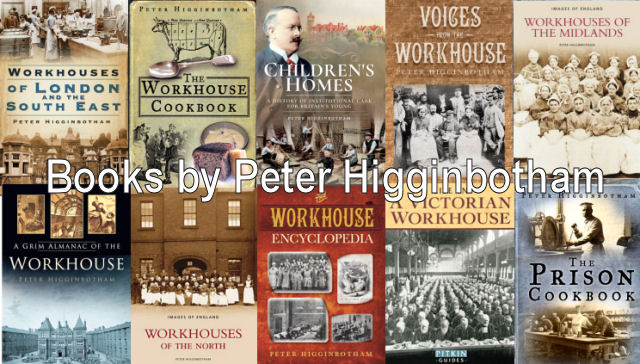Horncastle, Lincolnshire
Up to 1834
Horncastle had a parish workhouse on Church Walk from 1735 until the new Union workhouse was erected in 1838.
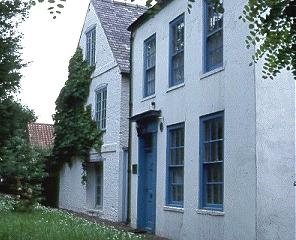
Horncastle parish workhouse.
© Simon Meeds.
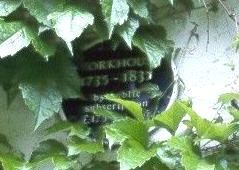
Horncastle parish workhouse.
© Simon Meeds.
After 1834
Horncastle Poor Law Union was formed on 16th January 1837. Its operation was overseen by an elected Board of Guardians, 71 in number, representing its 68 constituent parishes as listed below (figures in brackets indicate numbers of Guardians if more than one):
County of Lincoln: Asgarby, Ashby West, Ashby Puerorum, Asterby, Bag Enderby, Baumber, Belchford, Benniworth, Bucknall, Cawkwell, Claxby Pluckacre, Conningsby (2), Dalderby, East Barkwith, Edlington, Fulletby, Gautby, Goulceby, Great Sturton, Greetham, Hagworthingham, Haltham, Hammeringham, Hatton, Hemingby, Horncastle (3), Horsington, Kirkby-on-Bain, Kirkstead, Langton, Langton-by-Wragby, Lusby, Mareham-le-Fen, Mareham-on-the-Hill, Martin, Miningsby, Minting, Moorby, Panton, Ranby, Revesby, Roughton, Salmondby, Scamblesby, Scrafield, Scrivelsby, Somersby, Sotby, Stainton Market, Stixwould, Tattershall, Tattershall Thorpe, Tetford, Thimbleby, Thornton, Toynton Low, Toynton High, Tumby, Tupholme, Waddingworth, West Torrington, West Barkwith, Wilksby, Winceby, Wispington, Wood Enderby, Woodhall, Wragby.
The population falling within the union at the 1831 census had been 20,584 with parishes ranging in size form Claxby Pluckacre (population 25) to Horncastle itself (3,988). The average annual poor-rate expenditure for the period 1835-37 had been £12,520 or 12s.2d. per head.
At their meeting on 19th January, 1837, the new Horncastle Board of Guardians appointed a Building Committee to find a site and advertise for plans for a building to hold 200 inmates. A suitable site was found on Foundry Street in Horncastle. In March 1837, the Committee considered the plans that had been submitted and eventually selected those by George Gilbert Scott who, together with his partner William Bonython Moffatt, also designed the workhouses at Boston, Louth and Spilsby. In April, William Broadgate Jnr. was appointed as building contractor at a contract price of £2,998.
The Horncastle design followed Scott's typical plan with an arched single-storey entrance block, main block with centrally placed Master's quarters, and infirmary and ancillary buildings to the rear. The inmate numbers meant that only two storeys were required in the main block. The workhouse layout can be seen on the 1887 map below.
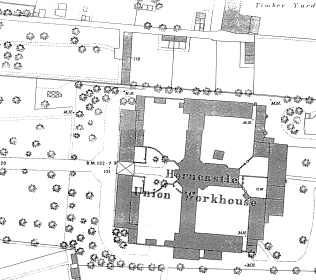
All that now survives is the main block which is used by the local social services.
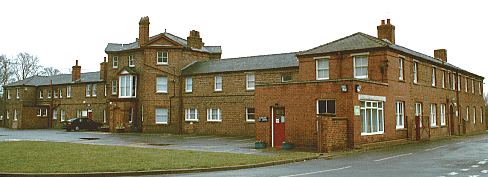
Horncastle main block from the south-west, 2001.
© Peter Higginbotham.

Horncastle main block from the north-east, 2001.
© Peter Higginbotham.
Children's Homes
After 1930, the site was converted into a children's home, and a number of 'cottage homes' were erected to the south of the workhouse. Each cottage accommodated around 20 boys or girls together with a house 'mother' or 'father'.
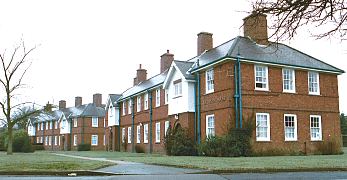
Horncastle cottage homes, 2001.
© Peter Higginbotham.
Shane Richards, a former inmate of the homes, recalls:
The former cottage homes are now used by Horncastle college.
Staff
Inmates
Records
Note: many repositories impose a closure period of up to 100 years for records identifying individuals. Before travelling a long distance, always check that the records you want to consult will be available.
- Lincolnshire Archives, St. Rumbold Street, Lincoln LN2 5AB. Holdings include Guardians' minute books (1837-1935); Building Committee minutes (1837-41); etc.
Bibliography
- Clarke, J.N. The Shadow of the Workhouse - Operation of the Poor Law in the Horncastle District of South Lindsey 1735-1935 (Society for Lincolnshire History & Archaeology, 2006)
- Anderson, C.L. How the poor of Horncastle were treated (Lincs Hist and Arch, 48-50, 1986)
Links
- None.
Unless otherwise indicated, this page () is copyright Peter Higginbotham. Contents may not be reproduced without permission.


